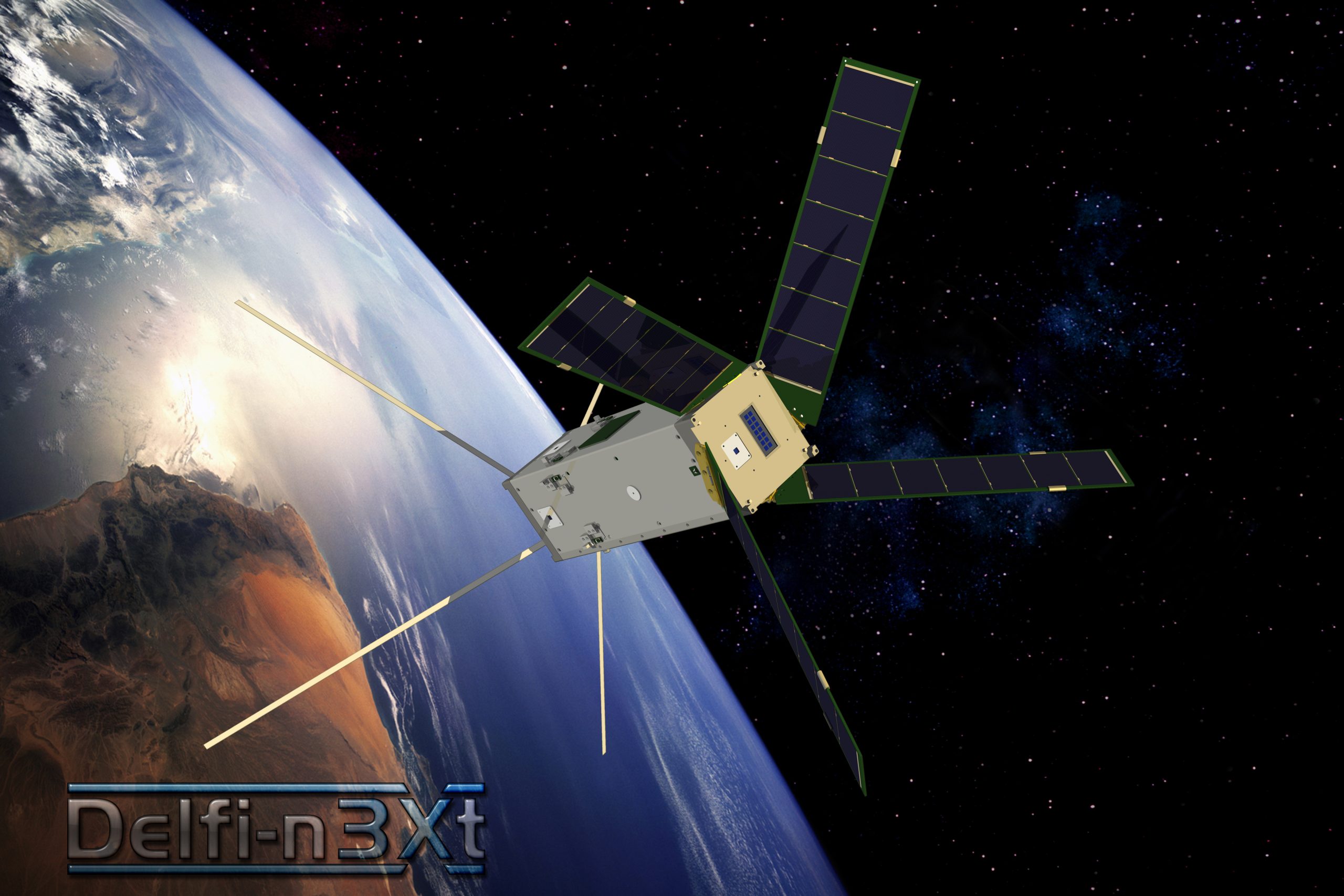The TU has another satellite
in orbit. The Delfi-n3Xt was
launched from Yasny, Russia
on refurbished Dnepr missile
on November 21 at 8:10. The
Delft ground station contacted
the satellite for the first
time at 09:47 – one and a
half hour later.
A clear beep emerging periodically from a sea of noise is what Dr. Chris Verhoeven and four students from Aerospace Engineering in the ground station on top of the EWI-tower were waiting for. Precisely as planned, Delfi-n3XT first came within reach of their antennas at 09:47 AM. The satellite then flew over western Russia, not far from Moscow.
Verhoeven sighed with relief. “If there were no signal now, it would have meant a year’s delay for us”, he explains. Meanwhile his mobile vibrates with incoming congratulations. Computer screens flash with data picked up by radio amateurs from around the globe. The Delft satellite builders have a large support community.
Meanwhile engineers in a temporary mission control set up in an auditorium at the AE building are waiting for data, as are the assembled journalists. Mission control will analyse the data from the ground station at the EWI-tower, but people at Aero-space Engineering will have to wait. Ground station hasn’t been able to pick up specifics on the solar panels and on the position of the antennas. At the next passage over Germany, in about an hour, such data should become available.
TU students and staff have been developing and building Delfi-n3Xt (Delfi Next) for almost five years. It is the successor to the illustrious Delfi-C3. This first Delft satellite was launched in April 2008 and, al-though designed for a year of active service, it still functions.
‘The old lady’, as Verhoeven calls her with endearment, appeared on the students’ screens ten minutes before Delfi-n3Xt did, just before she passed over the horizon towards the Sahara.
The Delfi satellites only measure 10 by 34 centimetres – a little larger only than a milk carton. Yet, despite their small size, the functionality of these nanosatellites is quickly approaching that of their bigger brothers for a fraction of the costs.
The Delfi satellite was developed in cooperation with Dutch space industry. The Delft spin-off company Isis, for example, arranged for the launch from Russia.
The main difference between Delfi-n3XT and her predecessor is her active position control. Whereas Delfi-C3 tumbles freely along her trajectory, Delfi-n3Xt will be able to influence its position by means of a system with sensors and actuators such as compensation wheels and magneto-torques. These should enable Delfi to direct her solar panels towards the sun and keep the antennas downward.
Delfi-n3Xt also features a micro-propulsion system. This micro-thruster ejects small puffs of nitrogen causing reaction forces onto the satellite. It’s a bit like a deflating balloon flying around, but much more quiet and controlled. Along with Delfi-n3XT a whole swarm of dozens of nanosatellites was released including two Dutch devices: ISIS’ Triton-1 for maritime communication and Amsat-NL’s FUNcube for educational purposes.
A few days later, project leader Jasper Bouwmeester (AE) said by telephone that “All three payloads are functioning well”. These are the ISIS radio, the solar cell experiment by Dimes and the micro-thruster. “During the first pass over Russia we heard a faint signal that reassured us. On the second pass over Western-Germany however the signal was much stronger and we could exchange packets of data.” These data showed that the solar cells were functioning and the batteries were fully charged. Monday they’ve let out a small puff from the microthruster. They could see the pressure changing, so they now know that the system works. Delfi-n3Xt is planned to keep sending data over the next three months.



Comments are closed.